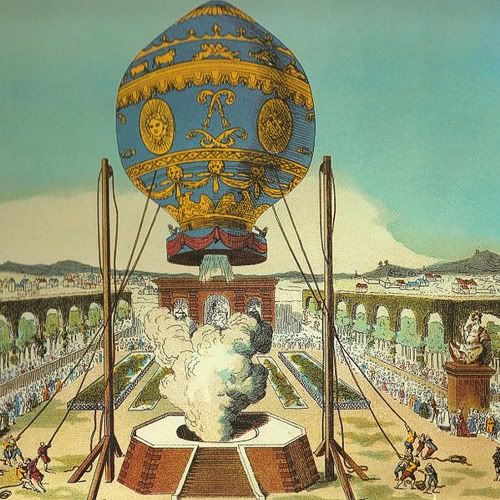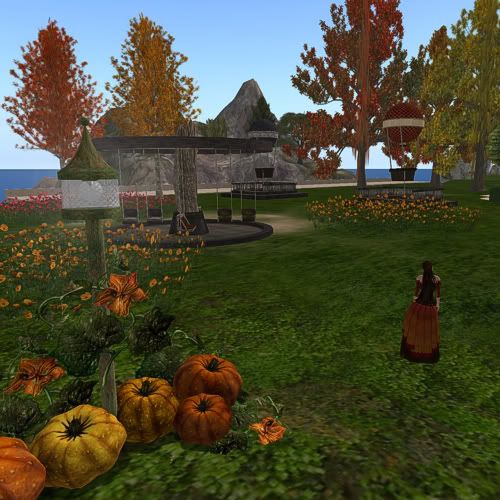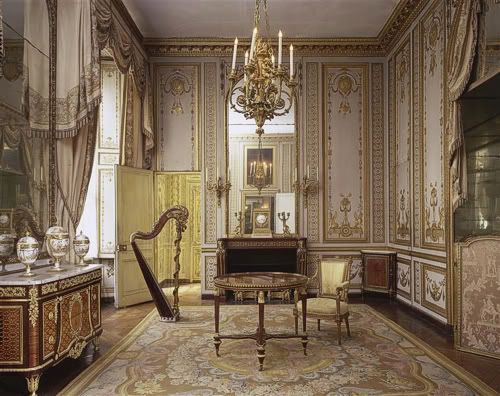Blogs

The first manned hot-air balloon, designed by the Montgolfier brothers , takes off from the Bois de Boulogne, Paris, on November 21, 1783


Marie Antoinette's Salon Dor one of the four main rooms of her Petits Appartements in Versailles.
These small rooms with their concealed doors escaped the surveillance of spies and favoured love affairs and intrigues. To step through the looking-glass, just as Marie Antoinette used to do, is an extraordinary experience. The four main rooms, the Mridienne, the two libraries, the Salon Dor, their boudoirs and their bathrooms provide a perfect image of eighteenth-century France as we imagine it today.
17th of November, 1773- Versailles, France
My Dearest Father,
Why must marriage be so complicated? It has only been a single day since the marriage of sweet Therese and yet I can already sense that she has the qualities and traits to become popular and successful at Versailles. As I gaze upon Therese and Charles, I see a lovely couple who enjoy each others company, however, when I look at Stanislas and I, we are the exact opposite. Therese and Charles have alreadyconsummatedtheir marriage on their wedding night which was desired of that Austrian and I, however, both of us have yet to consummate ours. For once in my time here at Versailles, I feel a connection with that terrible Austrian. I have realized how she felt when Stanislas lies about us in the bedroom. Perhaps I misjudged Antoinette and I never really knew how much we have in common. I shall still act cold and heartless towards Antoinette as that is what Stanislas wishes but perhaps i should invite the Austrian over to tea with Victoire, Therese, and I.
As I was at the ball this evening, I had the most interesting conversation with my dear Victoire. With Stnislas still away in the country, it has made me think of our marriage and I decided to ask for the advice of dear Tante Victoire. She said that I should not envy Therese's marriage due to its success but rather I should act as a motherly figure for Therese. As Victoire and I continued to speak, shereferredto women as being different kinds of meat and how Men only enjoy a certain kind. Perhaps that is the case with my marriage. I'm just not the type of meat that Stanislas enjoys but perhaps I would be morelikableif I had the proper seasonings. Maybe then we shall finally consummate our marriage andfulfill my duty to France.
Sincerely your loving Daughter,
Marie Josephine Louise
Some people have been surprised at the snow and frozen canals in the duchy, especially as far south as Provence and Languedoc. Both southern areas are uncomfortably hot during the summer, and yet during the winter, the canals are frozen! We checked some records and found that this has been going on intermittently for centuries:
1507 - Port of Marseilles (Provence) was entirely frozen - 3 feet of snow fell
1565 - Rhone frozen entirely at Arles
1568 - 11 Dec., loaded carts crossed the Rhone on the ice.
1570, 1571 - End of Nov 1570 to end of Feb 1571, carts could pass across iced rivers in Languedoc/Provence
1594 - Sea frozen at Marseilles and at Venice (at least -20C)
1621-1621 Venetian fleet hemmed in by the ice in the channels of Venice
1638 galleys in the port of Marseilles blocked in by ice
1655, 1656 - Seine frozen from the 8th to 18th December and again on 29th Dec to 28th Jan.
1657, 1658 - Seine entirely frozen
1662, 1663 - Frost lasted at Paris from 5th Dec to 8th Mar
1676-1677 2 Dec - 13 Jan, Seine frozen 35 days
1684 Thames frozen at London to 11 inches thick
1709 Gulf of Venice and Mediterranean frozen at Genoa, Marseilles, Cette (Languedoc)
1716 Thames frozen - Great number of shops and stalls were established on the river
1740 Thames frozen
Since as recently as 1742, the Seine has been frozen at least 7 times:
1742 -10C
1744 -9C
1762 -9C
1766 -9C
1767 -16C
1776 -12C
1788 -12C
1749-1781 - temperature never dropped below -9C at Provence, but dropped to -17C in Marseilles!
Seawater typically freezes at about -2C. Most canals are freshwater, including much of the Canal du Midi which is fed from a mountain lake, so the freezing temperature is 0C.
OOC - from The London Literary Gazette and Journal of Belles Lettres, Arts, Sciences, &c. - 8 January, 1825
Low temperature at Provence for 1749-1781 has been corrected. The original source of this information is from the 27th volume of the "Annales de Chimie et de Physique" which according to William Darby in his book "View of the United States - Historical, Geographical, and Statistical" prints the extract with negative numbers while the Gazette printed some of the numbers (like the Seine temps) without negative signs.
